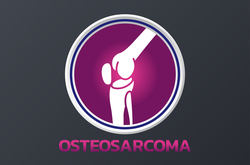Novel therapeutic targets for osteosarcoma
Osteosarcoma develops in adolescence at sites of rapid bone growth and has a high metastatic potential, with nearly 20 % of patients presenting with lung metastases and 80 % with micrometastases at diagnosis. Aggressive chemotherapy is the gold standard treatment but the majority of patients show resistance, leading to a dismal 5-year survival rate. Osteosarcoma microenvironment Recent evidence suggests a role for tumour microenvironment in osteosarcoma onset and progression. Funded by the EU as a Marie Skłodowska-Curie Individual Fellowships grant, the S-OS project investigated the intercellular cross-talk between osteosarcoma cells and components of the tumour microenvironment, in particular mesenchymal stem cells (MSCs). “The tumour microenvironment has long been known to affect cancer development and progression, but it is becoming increasingly clear also effects the efficacy of modern immunotherapy.We worked under the hypothesis that intercepting the factors that sustain osteosarcoma cells may interfere with malignant progression,″ explains project coordinator, Dr Michiel Pegtel. Cancer cells secrete extracellular vesicles (EVs) containing proteins, lipids, and regulatory RNAs. EVs can be taken up by surrounding cells or enter the circulation and influence target cell behaviour at distant sites. Evidence from a number of studies supports the diagnostic and prognostic potential of cancer EVs. “We set out to investigate if osteosarcoma EVs affect tumour progression by controlling its interaction with the tumour microenvironment,″ continues Dr Pegtel. Dr Rubina Baglio, the lead investigator of the S-OS project, developed a mouse model of osteosarcoma to test the effect of MSCs that had been pre-exposed to tumour EVs. Results showed that administration of ‘tumour-educated’ MSCs increased tumour growth as well as the occurrence of lung metastases. These findings underscored the pro-tumorigenic and pro-metastatic effect of MSCs following their interaction with EVs. Insight into EV mode of action Considerable effort went towards the identification of the molecular signals in osteosarcoma EVs responsible for altering MSC behaviour. Towards this goal, researchers employed state-of-the-art proteomics and deep sequencing techniques. Additionally, they designed specific functional assays to assess the mechanisms underlying MSC education. They discovered that osteosarcoma EVs carry the growth factor TGF-β, which induces MSCs to produce IL-6, causing inflammation and activating the oncogenic STAT3 signalling pathway in osteosarcoma cells. Furthermore, analysis of human osteosarcoma tissues corroborated the preclinical data, supporting a TGF-β-induced pro-metastatic gene signature alongside increased circulating TGF-β levels. The findings of the S-OS project indicate that cancer EVs act locally on the tumour microenvironment causing a pro-inflammatory loop and promoting tumour progression. These observations complement other studies, which show that tumour EVs help create a favourable environment for metastases of cancer cells. So far, the rarity of osteosarcoma and its complex, heterogeneous genetic alterations have challenged the prospect of finding a unique molecular driver that could be exploited for targeted therapy. “Our observations indicate that TGF-β and IL-6 may serve as new targets for therapeutic intervention in osteosarcoma patients,″ says Dr Baglio. Both IL-6 and TGF-β inhibitors have recently been evaluated for the treatment of other types of cancer with promising results. Considering the aggressiveness and the high recurrence rate of osteosarcoma, initial testing of these inhibitors will probably have to be performed in conjunction with current chemotherapy regimens. Drs Baglio and Pegtel are now investigating TGF-B and IL-6 blockade in immune-competent mouse models of osteosarcoma. Dr Pegtel is confident that ″combining immunotherapy and chemotherapy will eventually improve osteosarcoma survival and help lower the dose of current chemotherapy doses, leading to reduced toxicity.″







